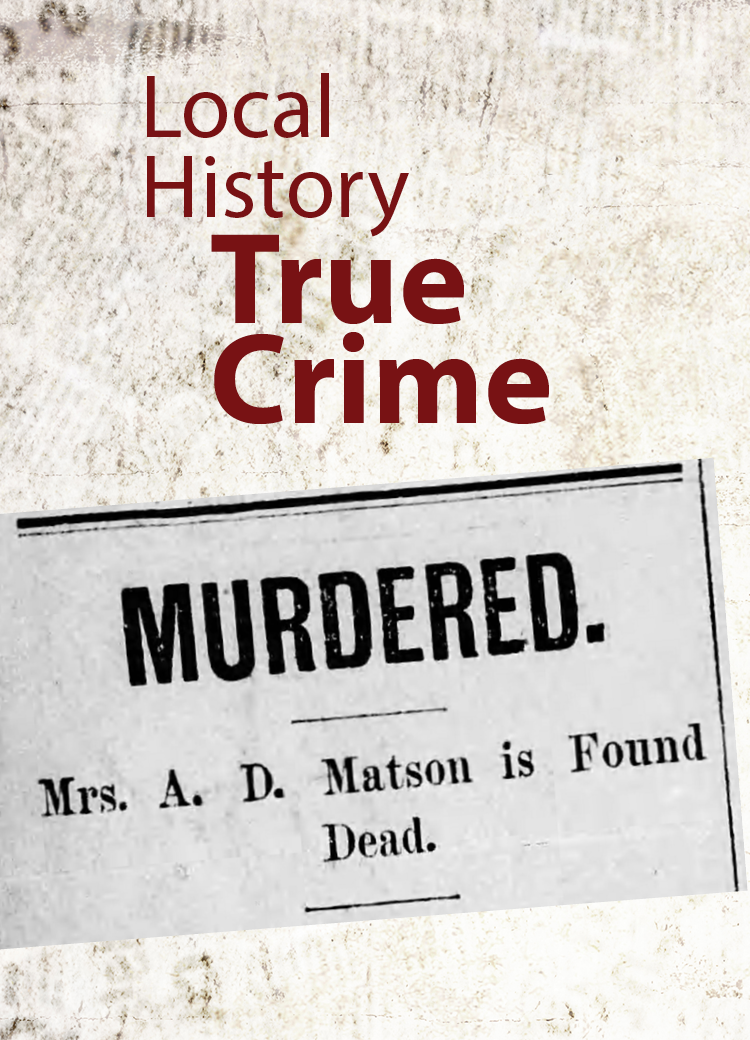True Crime: The Monroe Axe Murder Mystery
The Monroe Axe Murder Mystery
On the afternoon of Dec 20, 1894, a young boy was delivering milk to homes along Monroe Street. When he reached the house at the corner of 15th and Monroe, he noticed the pail of milk he’d left there 10 days before hadn’t been touched and there were at least a week’s worth of newspapers strewn about the lawn.
The boy immediately knew something was wrong and contacted the police. When officers entered the home, they found the house ransacked and the body of a woman lying dead on the floor. It appeared she had been viciously attacked and had been dead for several days.
So began the investigation into one of the most gruesome murders Topeka had seen up to that point. The crime shook the Monroe neighborhood, especially when residents began to claim the victim’s spirit was not at rest.
A heinous crime
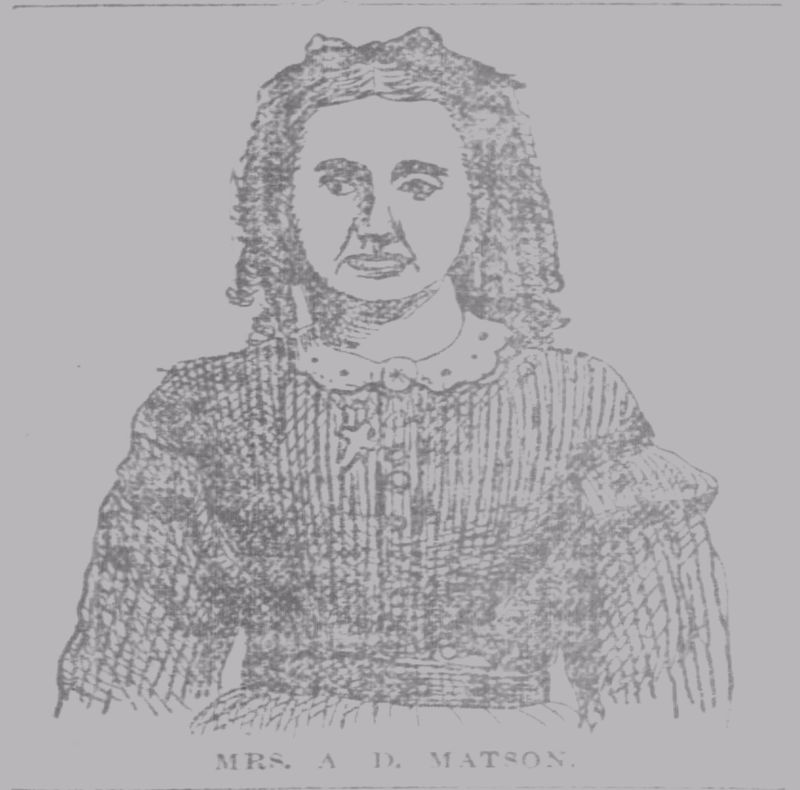 Sketch of Mrs. A.D. Matson, (Topeka State Journal)
Sketch of Mrs. A.D. Matson, (Topeka State Journal)
The victim was identified as the owner of the home, Almeda D. Matson, a well-known woman in Topeka. Matson served for several years on the city board of education and was highly regarded by her peers. She advocated strongly for Topeka schools and wrote several opinion articles for the local papers. Matson was also an active member of the Topeka Equal Suffrage Association and a prominent suffragist.
Matson’s body was found covered in clothes, rags and sacks of sweet potatoes, with pieces of carpet wrapped around her head. She’d been hit several times with a slung shot (a large weight affixed to the end of a long cord), which was wrapped up in the fabric on her body. The fatal blow was made with an axe to her head.
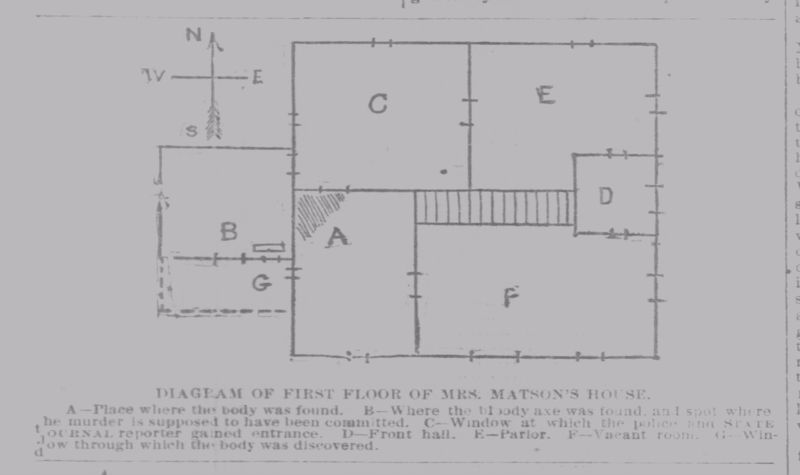 An aerial view sketch of Matson's house, showing where the body (A) and various pieces of evidence were found. (Topeka State Journal)
An aerial view sketch of Matson's house, showing where the body (A) and various pieces of evidence were found. (Topeka State Journal)
Four days after the murder was discovered, Sheriff D.N. Burdge arrested a suspect named Frank Nevels. Nevels had was one of Matson’s tenants and he had recently pawned a watch identified as having been owned by Matson. Witnesses also came forward saying they had seen Nevels make a slung shot that looked just like the one found on Matson’s body.
Nevels was sweated by the sheriff for several hours until he confessed he had been at the house the night of the murder, but he only stood outside while two other men committed the crime. Even with the evidence against Nevels being “wholly circumstantial,” Sheriff Burdge was certain he had the right man and charged Nevels with murder. At his trial almost two years later, the jury found Nevels guilty of second-degree murder.
Nevels’ attorney appealed the verdict. However, less than two weeks after his conviction, Nevels was found dead in his jail cell. While officials believed Nevels died of consumption, he had earlier told one of his jailers “the shock of the trial has killed me."
Stealthy steps & spectral shadows
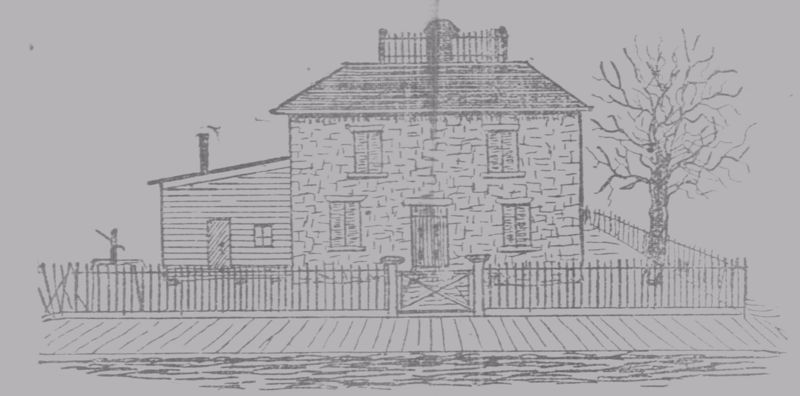 A sketch of the Matson house, 1435 SW Monroe St. (Topeka State Journal)
A sketch of the Matson house, 1435 SW Monroe St. (Topeka State Journal)
For almost a year after her murder, Almeda Matson’s house sat vacant. No one wanted to move into a house where such a grisly crime had taken place. Over time, the house began to gain a reputation for being haunted by Matson’s ghost. The Kansas Semi-Weekly Capital reported that at night, “particularly when there is no moon, those who find themselves in the neighborhood, pass by on the opposite side of the street."
There were tales of those who’d been in the area at night who had seen the ghostly form of a woman floating down 15th Street toward the Matson house. The spirit would then fly over the fence and disappear through a window.
Finally, in December 1895, the Lytle family purchased the house. J.R. Lytle was a barber and had been one of the African Americans who served in the Topeka Police Department. Lytle, his wife, their four children and his mother-in-law all moved into the spacious house. When he moved in Lytle told the local press he was not superstitious and did not believe in ghosts.
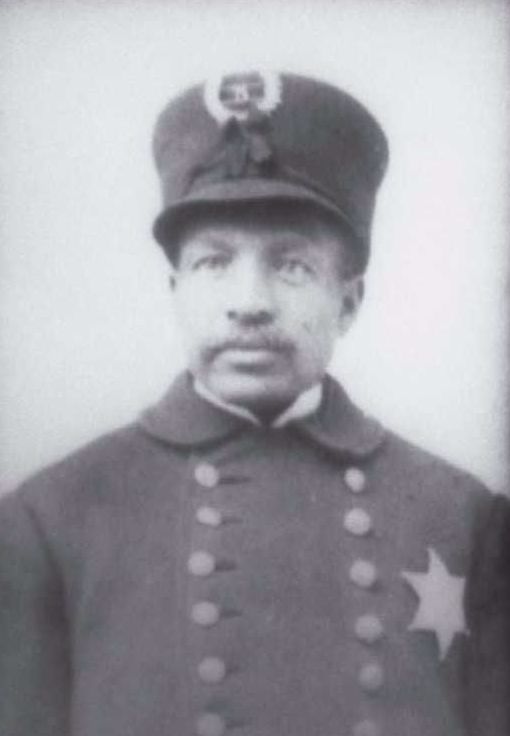
John R. Lytle in his Topeka Police Department uniform. (Image courtesy of kansasmemory.org, Kansas State Historical Society, Copy and Reuse Restrictions Apply)
However, in June 1897, Lytle said he was compelled to move out. “There is something wrong in the house,” Lytle told the Topeka State Journal. While Lytle didn’t think it was anything supernatural, his wife and children had been terrified by phantom footsteps that sounded like they were running up and down the stairs. None of them would dare go down in the cellar after sunset after Lytle's son ran screaming from the basement, claiming he had seen “the form of an old woman” with blood all over her face.
A “Message” from the beyond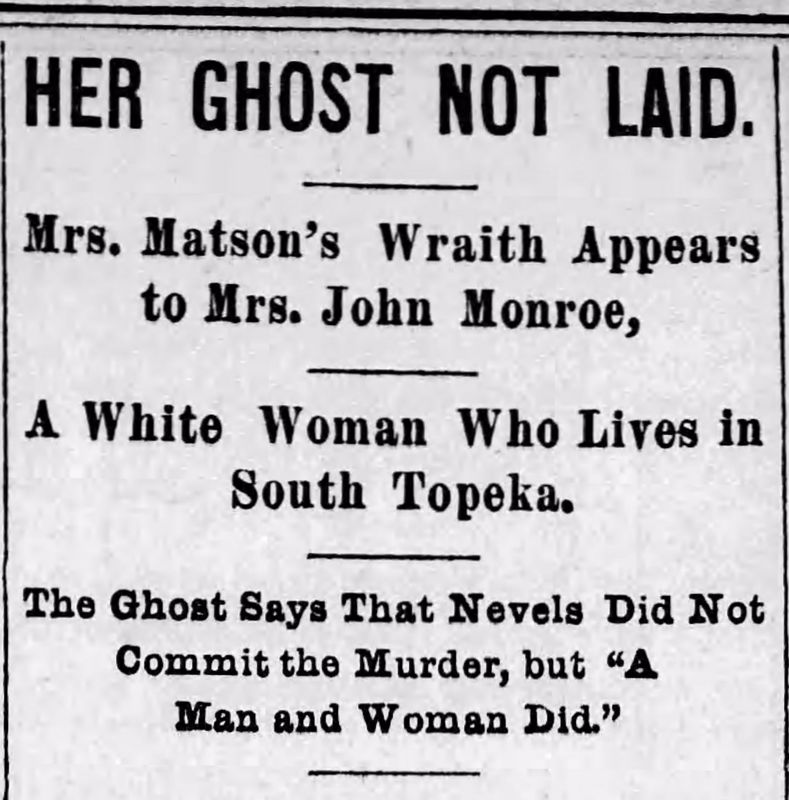
Headline from the Topeka State Journal, June 24, 1897
A few weeks after the story of the Lytle’s haunting was published, a local spiritualist named Nancy Monroe told a newspaper reporter she had been visited by Mrs. Matson’s spirit. Monroe said the spirit told her Frank Nevels was not the guilty party and Matson’s soul could not rest until the true culprits were brought to justice.
Monroe didn’t stop there. With no evidence beyond her spirit message, she publicly laid the blame on Mr. and Mrs. Sam Milton, who had been bit players in the case against Nevels. The Miltons were less than thrilled to have been accused of murder in the Topeka papers. They filed a complaint against Nancy Monroe who was fined $1 and costs for disturbing the peace.
Other spiritualists in Topeka wanted to have a séance at the Lytle house to try and get to the bottom of what Mrs. Matson’s spirit wanted. The group tried to force their way into the house but J.R. Lytle, who still did not believe in ghosts, refused the group entry. They apparently argued for half an hour before the Lytles firmly closed the door on the group.
The otherworldly disturbances must have calmed down at some point, since the Lytle family remained in the house at 1435 Monroe Street until around 1901. Over the years, various other families and businesses occupied the property until it was torn down in 1988. Whether or not the ghost continued to haunt the property is unknown.












